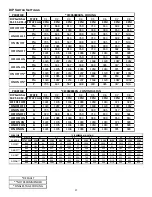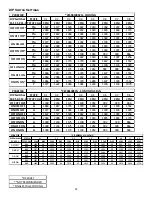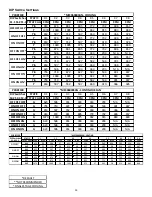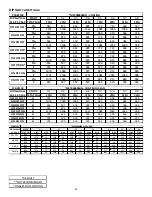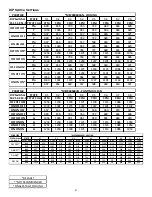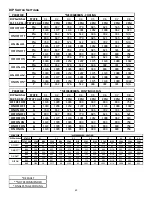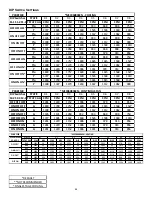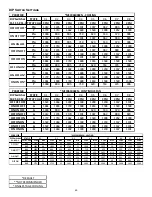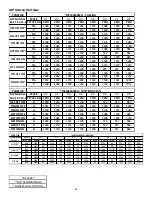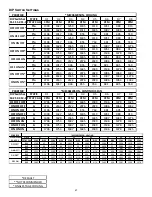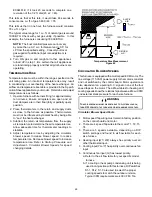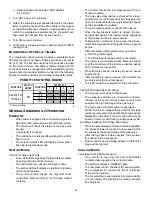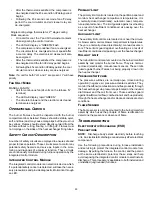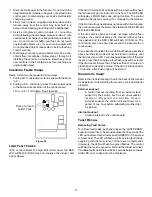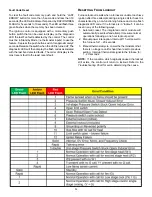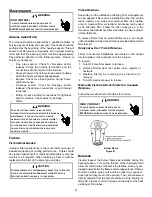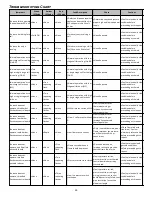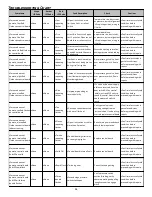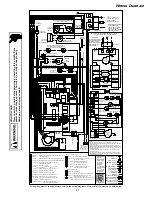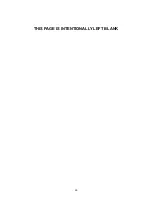
51
1. Disconnect all power to the furnace. Do not touch the
integrated control module or any wire connected to the
control prior to discharging your body’s electrostatic
charge to ground.
2. Firmly touch a clean, unpainted, metal surface of the
furnace away from the control. Any tools held in a
person’s hand during grounding will be discharged.
3. Service integrated control module or connecting
wiring following the discharge process in step 2. Use
caution not to recharge your body with static electricity;
(i.e., do not move or shuffle your feet, do not touch
ungrounded objects, etc.). If you come in contact with
an ungrounded object, repeat step 2 before touching
control or wires.
4. Discharge your body to ground before removing a new
control from its container. Follow steps 1 through 3 if
installing the control on a furnace. Return any old or
new controls to their containers before touching any
ungrounded object.
Checking Flame Signal
Flame current can be measured in two ways:
1. Putting a D.C. microamp meter in series with the flame
rod
2. Putting a D.C. volt meter across the two solder pads
in the flame current section of the control board.
1 D.C. volt = 1 microamp. See Figure 46.
Flame Current
Solder Pads
Figure 46
Limit Fault Codes
If the control detects the high limit circuit open, the RED
LED will flash FOUR times and energize the inducer and
indoor blower.
If the limit circuit opens five times within a single call for heat,
the furnace will go into lockout for one hour. The RED LED
will display a FOUR flash code during this time. The control
board can be reset by cycling 115 volt power to the furnace.
If the limit circuit opens and does not close within five minutes,
the control assumes the blower has failed the RED LED will
flash ELEVEN times.
If the limit circuit opens and does not close within fifteen
minutes, the control assumes the manual rollout or fuse
has opened and the RED LED will flash FIVE times. The
control will enter a one hour lockout and the inducer will run
continuously.
In an open limit condition the red LED will flash as described
above but the error code will not be stored in memory until
the limit resets or until 15 minutes has elapsed. So if the limit
resets in less than 5 minutes a four flash code will be stored.
If the limit resets in more than 5 but less than 15 minutes, an
eleven flash code will be stored. If the limit is still open after
15 minutes, a five flash code will be stored.
Diagnostic Chart
Refer to the
Troubleshooting Chart
in the back of this manual
for assistance in determining the source of unit operational
problems.
External Lockout
-
A control lockout resulting from an external fault
sensed by the control, such as an unsuccessful
recycle or retry period, or a limit trip. Once in
External Lockout, the control will shut down for a
period of one hour before attempting another trial
for ignition.
Internal Lockout
-
A failure internal to the control board.
Fault Recall
Retrieving Fault Codes
To retrieve fault codes, push and release the “LAST ERROR”
button for more than 1/ 5 second and less than 5 seconds (the
LED will indicate this period by solid GREEN for 1/5 second
to 5 seconds). The LED will flash up to five stored fault codes,
beginning with the most recent. If there are no fault codes
in memory, the LED will flash two green flashes. The control
will flash the most recent error first and the oldest error last.
If multiple faults exist there will be 2 seconds between codes.
Solid LED error codes will not be displayed.

